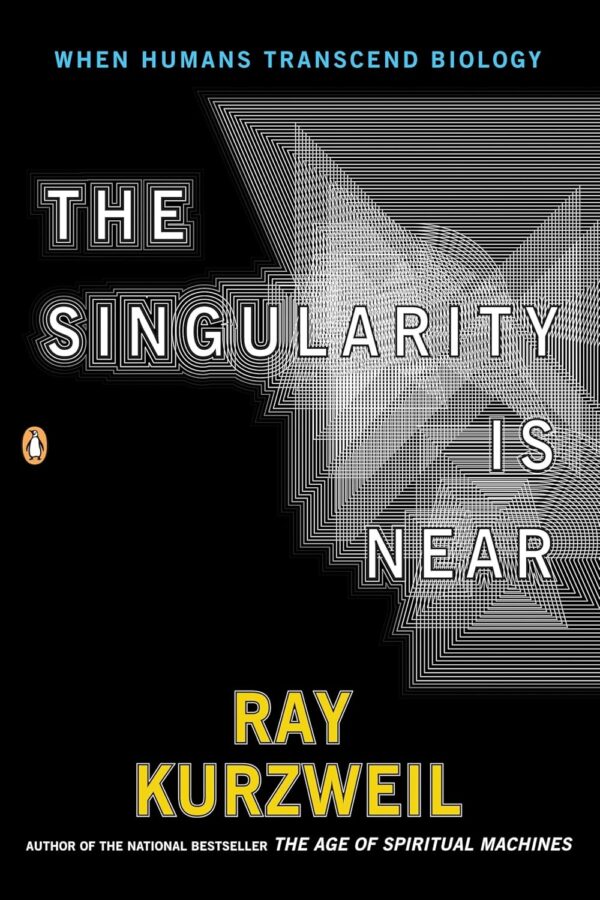A Landmark Vision of Humanity’s Technological Future
“The Singularity Is Near: When Humans Transcend Biology” by Ray Kurzweil is a landmark work that has shaped the way technologists, futurists, and the public think about the future of artificial intelligence and human evolution. First published in 2005, this book remains a foundational text in the discourse on technological singularity-the hypothetical moment when machine intelligence surpasses human intelligence, leading to unprecedented changes in civilization. Kurzweil, a renowned inventor and futurist, presents a sweeping, optimistic vision of a future where humans and machines merge, unlocking new realms of possibility for intelligence, longevity, and creativity.
Exponential Growth and the Law of Accelerating Returns
Central to Kurzweil’s thesis is exponential technological growth, which he calls the Law of Accelerating Returns. He argues that technological progress, particularly in information technologies, does not advance linearly but accelerates over time. According to Kurzweil, this exponential trajectory is already evident in the miniaturization of computer hardware, the rapid increase in processing power, and the plummeting cost of data storage. He uses compelling charts and historical data to illustrate how each new generation of technology builds upon the last, setting the stage for breakthroughs that once seemed impossible.
The Road to the Singularity: Milestones and Predictions
Kurzweil outlines a roadmap to Singularity, forecasting key milestones such as decoding the human genome, advances in nanotechnology, and the rise of artificial general intelligence (AGI). He predicts that by the 2040s, machines will match and vastly exceed human cognitive abilities, leading to the merging of biological and non-biological intelligence. The book explores how brain-computer interfaces, neural implants, and AI-driven medical advances could enable humans to transcend the limitations of biology, potentially achieving radical life extension and even digital immortality. Kurzweil’s predictions, while bold, are grounded in detailed analysis of technological trends and scientific research.
Merging Mind and Machine: The Promise of Human Enhancement
A central theme of “The Singularity Is Near” is the blurred boundaries between humans and machines. Kurzweil envisions a future where nanobots circulate in our bloodstream, repairing cells and enhancing our physical and cognitive abilities. He describes how brain-computer interfaces could allow us to augment our memory, intelligence, and sensory perception, creating new forms of consciousness and experience. The book explores the philosophical implications of these changes, asking what it means to be human in a world where our minds and bodies are no longer bound by biology alone.
Ethical, Social, and Philosophical Implications
Kurzweil does not shy away from the profound ethical and societal questions raised by the Singularity. He discusses concerns about inequality, privacy, and the potential misuse of advanced technologies. The book considers the risks of AI superintelligence, including the possibility of machines acting in ways misaligned with human values. Kurzweil advocates for proactive governance, transparency, and a commitment to ensuring that the benefits of the Singularity are shared broadly across humanity. He also addresses philosophical questions about consciousness, identity, and the nature of self in a post-biological world.
Critiques and Controversies
“The Singularity Is Near” has sparked lively debate in scientific and philosophical circles. Critics argue that Kurzweil’s predictions are overly optimistic and that he underestimates the technical and social challenges of achieving accurate artificial general intelligence and human-machine integration. Others question the feasibility of digital immortality and the ethical ramifications of radically extending human life. Despite these critiques, the book remains a touchstone for discussions about the future of AI, biotechnology, and the human condition, inspiring enthusiasm and scepticism in equal measure.
A Readable and Engaging Exploration of Complex Ideas
One of the strengths of Kurzweil’s writing is his ability to make complex scientific and technological concepts accessible to a general audience. He uses clear language, vivid analogies, and engaging storytelling to bring his vision to life. The book is filled with historical anecdotes, personal reflections, and thought experiments that invite readers to imagine themselves in a future transformed by technology. Whether you are a technologist, philosopher, or simply a curious reader, “The Singularity Is Near” offers a thought-provoking journey through the possibilities and perils of human progress
Influence on Technology, Science, and Popular Culture
Since its publication, “The Singularity Is Near” has profoundly impacted artificial intelligence, robotics, and futurism. Kurzweil’s ideas have influenced entrepreneurs, scientists, and policymakers, and Singularity has become a fixture in popular culture. The book has inspired conferences, research initiatives, and countless debates about the trajectory of technological change. Its legacy can be seen in the ongoing discussions about AI safety, transhumanism, and the ethical design of emerging technologies.
Why “The Singularity Is Near” Remains Essential Reading
As we move deeper into the age of artificial intelligence and biotechnology, the questions raised by Kurzweil’s book are more relevant than ever. “The Singularity Is Near” challenges readers to think beyond incremental progress and grapple with exponential change’s transformative potential. It serves as both a roadmap and a warning, urging us to harness technology wisely and to remain vigilant about its risks and rewards. For anyone interested in the future of humanity, this book is an essential addition to the conversation.
Conclusion: A Visionary Blueprint for the Future of Intelligence
In summary, “The Singularity Is Near: When Humans Transcend Biology” is a visionary and provocative exploration of the future of technology and humanity. Ray Kurzweil’s optimism, rigorous analysis, and imaginative foresight make this book a must-read for anyone seeking to understand the profound changes ahead. Whether you agree with his predictions or not, Kurzweil’s work invites us all to consider what it means to be human in a world where the boundaries between biology and technology are rapidly dissolving.


